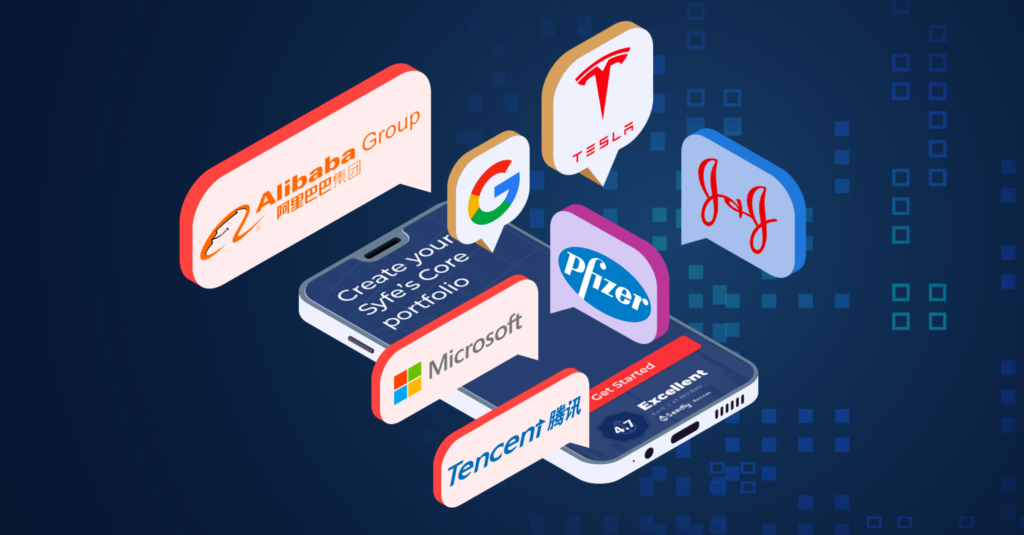
All Syfe portfolios are designed with a unique objective in mind. For REIT+, that’s providing you with passive income. For Cash+, that’s providing you with a smarter home for your savings.
The new Syfe Core portfolios are no different. Core Defensive, Core Balanced, and Core Growth are each designed to maximise risk-adjusted returns, as measured by the portfolio’s Sharpe Ratio.
To further optimise returns, we’ve also applied a Smart Beta methodology to the equity component of Syfe Core portfolios, and added a greater exposure to Chinese and Chinese technology stocks.
Let’s delve into the details below.
Asset class selection
One key aspect of portfolio construction is asset class selection. We selected equities, bonds and commodities as our main investable asset classes, and used exchange-traded funds (ETFs) to represent each asset class.
As such, each Core portfolio is a complete portfolio of stocks, bonds and gold that’s represented by 18 ETFs in all. These 18 ETFs give investors the opportunity to invest in US stocks, China stocks and more!
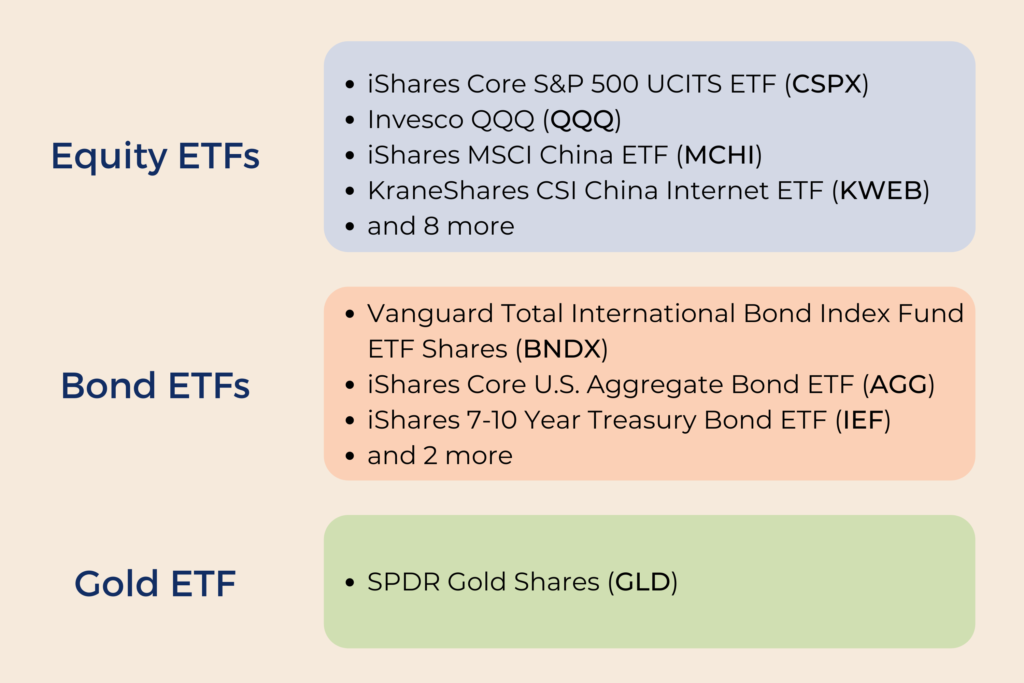
Having determined our universe of investable assets, we then apply an Asset Class Risk Budgeting process for portfolio allocation.
Simply put, Asset Class Risk Budgeting is a risk-based method of portfolio allocation whereby the overall risk of the portfolio is distributed among various asset classes.
As a simple illustration, based on historical data, the Core Balance strategy has an overall portfolio risk (as measured in standard deviation of returns) of 6.5% p.a. How should this risk be “spent” across the portfolio components – stocks, bonds, and gold – given that each asset class has its own level of risk?
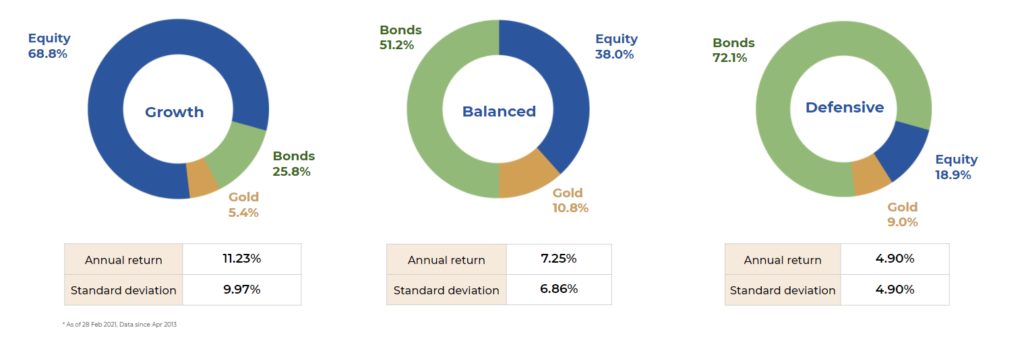
This is where Syfe’s investment team will optimize the portfolio weights of each asset class to meet the overall risk budget of the portfolio while seeking to achieve the maximum Sharpe Ratio possible.
Using Smart Beta to add robustness
The value-add of our Core portfolio strategy lies in our use of Smart Beta factors, which we introduced for our popular Core Equity100 portfolio last year.
Simply put, our Smart Beta strategy optimises our Core equity selection based on three factors. The portfolio has a geographical tilt towards China, a moderated tilt towards growth, and a low-volatility tilt. These factors have been selected to generate better risk-adjusted returns.
Exposure to China
Core portfolios are also the first amongst Syfe portfolios to include an enhanced exposure to Chinese and Chinese tech stocks. They represent broader sector and geographical factors that we selected by decomposing the trends and cycles of a slate of candidate factor portfolios using econometric and graphical screens. To validate their selection, these factors were then back-tested using our point-in-time algorithms.
What we found was that the Chinese market has been outperforming since last year. Beyond providing additional diversification benefits, we believe the China and Chinese tech factors will come into play going forward.
Read more: Investment Outlook 2021: A Chinese Bull Run
According to Goldman Sachs, China is poised to deliver “one of the strongest and fastest macro recoveries in 2021 among major economies globally”. Investors are increasingly seeking greater exposure to China.
This is a key reason why Core portfolios include the iShares MSCI China ETF (MCHI) and KraneShares CSI China Internet ETF (KWEB). These ETFs are well placed to perform over the long term and provide investors with solid exposure to China’s growth.
In line with the enhanced exposure to Chinese stocks, Core portfolios have a greater geographical allocation to China.
For instance, Core Growth holds a 14% allocation to China while Core Balanced has a 7% allocation.
Choosing your ideal Core
Depending on your investment goals, time horizon, and risk appetite, you can choose between the following Core portfolios.
- Core Defensive is a low-risk portfolio that’s ideal for conservative investors, or those approaching a particular financial goal
- Core Balanced is a medium-risk portfolio that’s ideal for moderate investors with a mid-to long-term horizon
- Core Growth is a higher-risk portfolio that’s ideal for growth-oriented investors with a longer time horizon
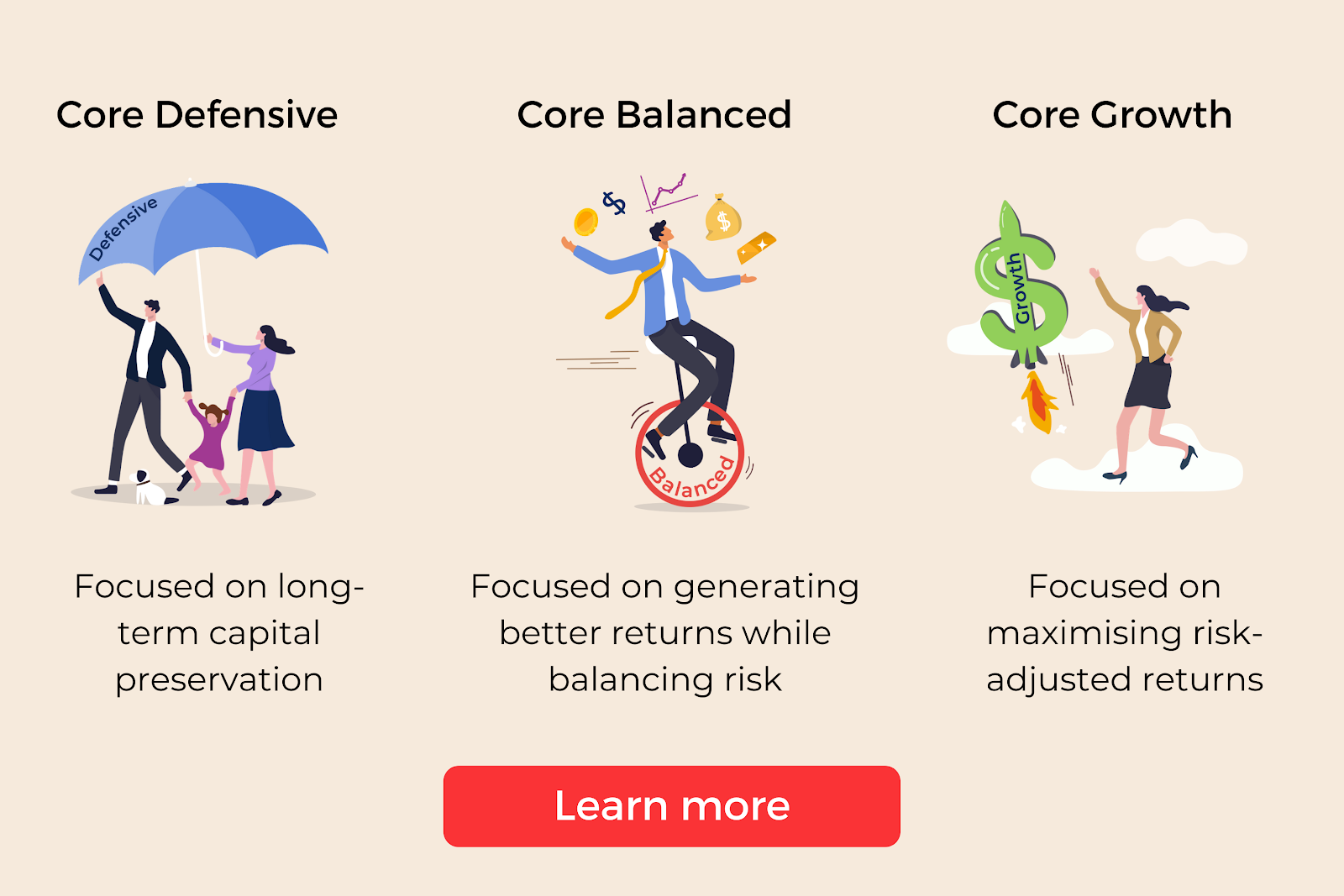
You can set up more than one Core portfolio. For example, you may invest in Core Growth for a long-term goal like retirement and choose Core Defensive for a shorter term goal such as a house downpayment.
Core is an ideal portfolio for DCA
Dollar cost averaging (DCA) – a system of investing consistently over time – is an important aspect of growing wealth. Based on our conversations with our clients, we found that many of them prefer a DCA strategy.
As such, we built Core portfolios with this consideration in mind. What makes them ideal for a DCA strategy is their stable asset allocation. Core portfolios utilize risk parameters that are calibrated for a longer term risk horizon to reduce short term portfolio reflexivity, i.e. short term asset allocation changes.
Read more: Understanding Our Core Portfolio Strategy
When you adopt a DCA strategy with Core, you’ll be able to accumulate more of your investments at lower prices when the market dips. As such, you’ll end up averaging out your overall investment costs.
How to build a core-satellite strategy with Syfe portfolios
One of the investing strategies we like sharing about is the core-satellite approach. We believe the ideal core is a low-cost ETF portfolio that provides broad market exposure.
From this perspective, our Core Defensive, Balanced, or Growth portfolios all work well as your core holding.
Financial experts typically recommend that your core investments make up 70% to 90% of your overall portfolio. Here’s an example of how a client can potentially use Core Balanced, Core Growth, and REIT+ together as his core allocation.
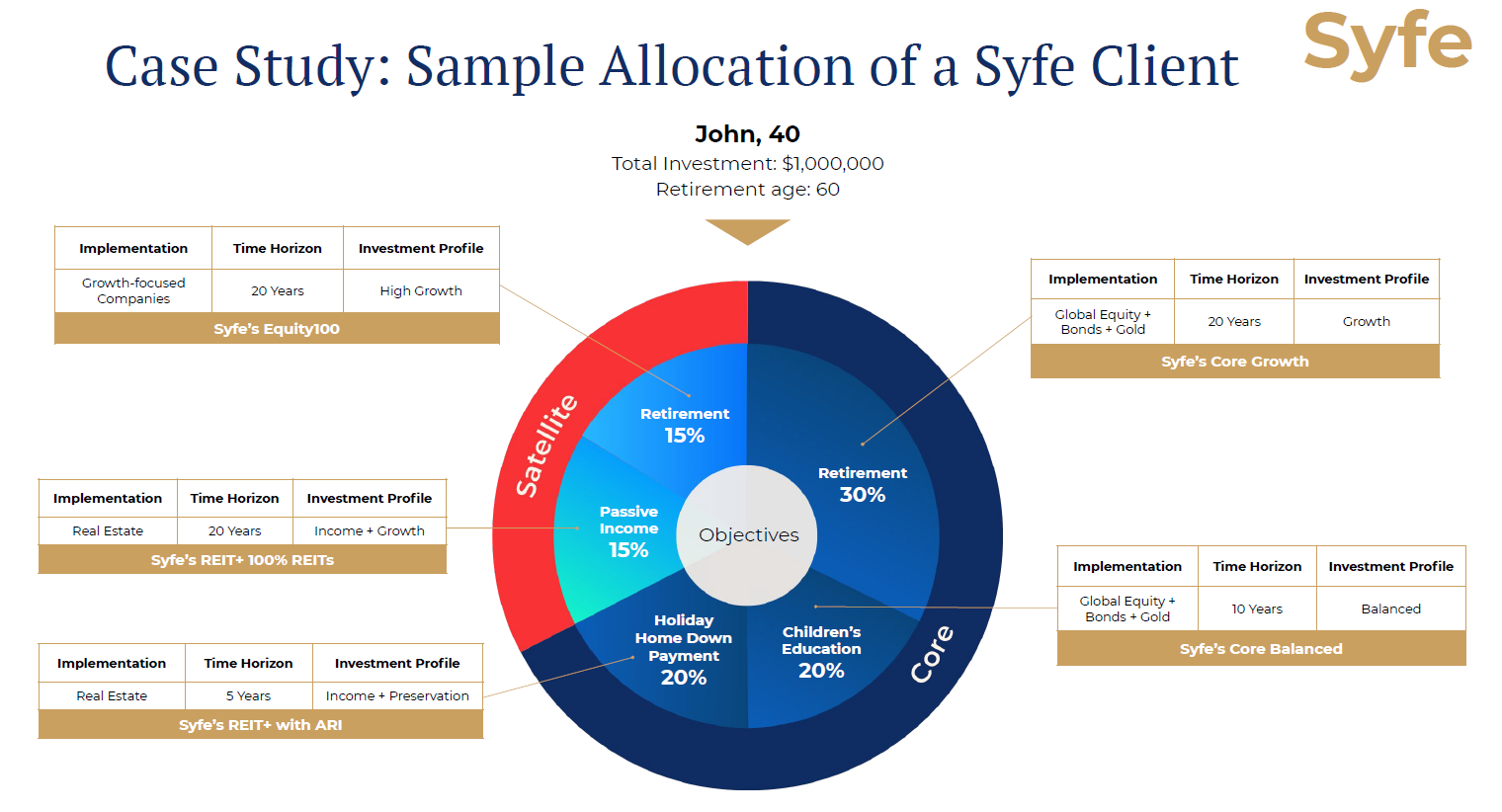
For his retirement 20 years away, John chooses Core Growth to maximise the return potential of his investments. For his children’s university education in 10 years, he prefers Core Balanced for a mix of growth potential and capital preservation.
To save for a house downpayment in five years, he taps on the REITs with Risk Management portfolio to earn dividend income while preserving his investment value.
Meanwhile, his satellite investments – Core Equity100 and REIT+ (100% REITs) are designed to take his retirement years even further with their high growth potential. Satellite investments typically carry more risk than the core, but they also offer the opportunity for outperformance.
Taken together, both the core and satellite component of your investments can be an effective yet interesting way of building wealth.




You must be logged in to post a comment.